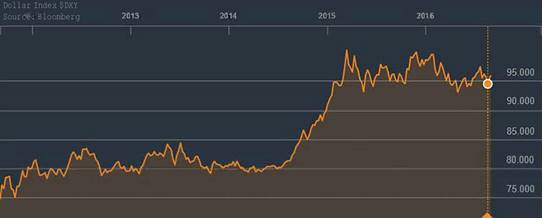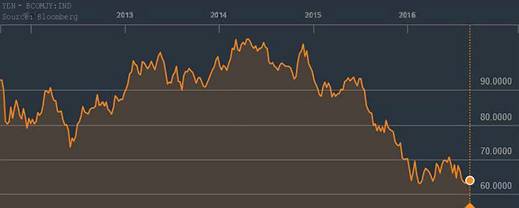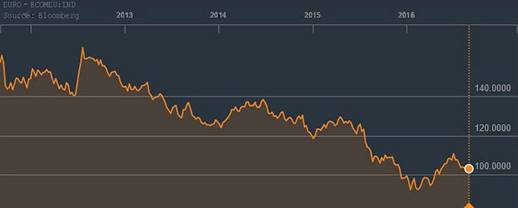Why The Greater Recession Will Be Dollar Bearish
The Great Recession of 2008 provided markets with an interesting irony: As the US economy was collapsing under the weight of crumbling home prices, investors curiously flocked to the US dollar under the guise of “The Safety Trade.”
But the truth is that investors weren’t running into the dollar for safety, what they were actually doing was unwinding a carry trade. In a carry trade an investor borrows a depreciating currency that offers a relatively low interest rate and uses those funds to purchase an appreciating currency that offers the potential for higher returns on its sovereign debt and stock market. The trade’s objective is to capture the difference between rates, while also benefitting from the currency that is rising in value against the borrowed (shorted) funds.
In the years leading up to the 2008 crisis, a popular trade was to short the US dollar and invest in higher yielding emerging markets (EM’s) such as Brazil, Russia, India, and China referred to as the “BRIC’S”. The Federal Reserve’s manipulation of interest rates following the attacks of September 11, 2001, sent the market on a desperate search for yield. Investors found the return they were seeking in the EM’s and remained there for years as the Fed was merely playing catch-up with rates. The Fed Funds rate went from 1 percent in 2004, to 5.25 percent in 2006, while the value of the dollar reduced during that timeframe.


As you can see from 2002 to 2008, EM stocks rose and the dollar fell as investors took advantage of the relative yield differential between the US and EM’s.
But by the second half of 2008 the market’s focus shifted away from yield differentials and FX advantages to a massive concern over tumbling US growth spilling over to the EM’s due to collapsing real estate prices and insolvent banks. The short dollar/long EM carry trade reversed as investors panicked to cash out of booming BRIC markets and bought back dollar loans to close out the trade. This sent the dollar soaring and EM stocks crashing, which provided the peculiar narrative that investors were moving into the dollar for safety even as the US economy and financial system was in freefall.
What’s Happening Now?
Today we actually have the reverse scenario: the dollar index is rising as the yen and euro currencies are falling. The carry trade is to borrow (short) the yen and euro and buy higher-yielding dollar-denominated assets. Therefore, the next economic collapse will reverse this carry trade.
Dollar Index:

Yen:

Euro:

This explains the real reason why the Japanese yen spikes at the slightest whiff of market turmoil. Market analysts again like to describe this phenomenon as a flight to safety. But why would any investor seek protection in Japan when its enormous debt to GDP ratio proves the nation is insolvent and its central bank is hell-bent on creating inflation by all means necessary?
Investors need to prepare their portfolios for the next recession, which will be worse than 2008 due to the massive increase in global debt and central banks that have no room left to reduce borrowing costs. Therefore, expect the yen and euro will be the beneficiaries of the next carry trade reversal and a much weaker response on the part of the greenback during the next crisis.
But as mentioned, perhaps the biggest worry for investors is what happens to the global economy when there is no room for central banks to save us? After all, they are already pushing the limits of their money printing and Zero Interest Rate Policies schemes. And the 90+ months of unprecedented and unorthodox monetary expansion has made asset bubbles and debt levels much greater than at any other time in history. The dollar will also come under pressure as the Fed’s current divergent monetary policy joins the ECB and BOJ in a commitment to perpetual QE and ZIRP.
The next recession will be much different than the crisis of 2008 in its intensity, duration and effect on the US dollar. Of course, the only caveat would be a crisis that is precipitate by an aggressive Fed rate hike cycle. Otherwise, wise investors will anticipate this differential and have a plan to increase their allocation to precious metals at the onset of the next crisis.
********
Michael Pento produces the weekly podcast “The Mid-week Reality Check”, is the President and Founder of Pento Portfolio Strategies and Author of the book “The Coming Bond Market Collapse.”
















